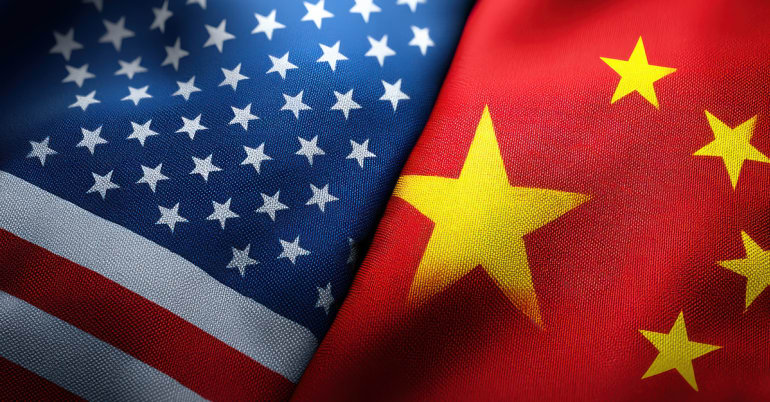The article was first published in The Business Times on 10 May 2025.
Who will blink first, the US or China? This question looms large as the world watches the most consequential trade dispute of the modern era unfold. We are both bystanders and participants in a high-stakes economic stand-off, where tariffs, sanctions and strategic posturing combine to reshape the global trade order.
For weeks, both nations have played hardball, escalating tariffs and seeking to out-stare each other. But recent reports – emerging in the past few days – suggest concessions and compromise are possible, with US Treasury Secretary Scott Bessent set to hold talks with Vice-Premier He Lifeng in Switzerland this weekend.
Importantly, these bilateral discussions are described as focused on de-escalating tensions rather than resolving the trade dispute entirely. Nonetheless, this is a positive step. Given the scale of US-China trade, it matters less who blinks first or who wins the stare-down. Rather, who loses first matters less than who loses more.
And if you thought this would require America becoming more like China in production, and China more like America in consumption, you’d be absolutely right
Less is more
In 2024, the US exported goods worth US$143.5 billion to China, while China sold US$438.9 billion to the US. By the strict definition of a trade balance, China has more to lose. Indeed, China sends an estimated one-fifth of its total exports (including transhipments) to the US, so diminished access to this critical market is worrisome. Not fatal, perhaps, but as reports of factory closures proliferate, certainly concerning. This is often the fate of surplus economies.
The problem is, China has limited growth levers currently. The collapse of its property sector has dampened consumption. When the value of your major asset – your home – has trended lower for the better part of five years, the last thing on your mind is a spending spree. In such circumstances, households tend to save. Hence, the authorities’ mercantilist pivot to exported-oriented growth.
China’s external dependency is sobering. Over the last five years (2020 to 2024), exports have been critical in offsetting the property sector’s collapse and weak consumption. Indeed, “net exports” that account for goods and services balance contributed some 20 to 30 per cent of annual gross domestic product growth (peaking at 40 per cent in Q1 2025). Put another way, net exports accounted for 1.5 per cent of China’s official 5 per cent growth from 2023 to 2024. Thus, China’s sharply deteriorating trade outlook for 2025 rightly occupies policymakers in Beijing.
Yet the path to de-escalation is long, and the stakes are high. Mismanaged, this dispute could plunge the US into recession and deepen China’s precarious economic slowdown. The International Monetary Fund warns that a full-blown trade war could shave 1 to 2 per cent off global GDP in 2025, with supply chain disruptions and rising costs hitting consumers and businesses alike.
My sense is markets see less a zero-sum game than a lose-lose outcome, hence its willingness to look through trade tensions
How are Trump’s policies impacting the investment landscape? Find out here.
Looking through
Not everyone is as cautious as I am. While there’s many a slip ‘twixt cup and lip, markets have seemingly dismissed the tariff war’s severity. How else to explain recent behaviour? As I write, the S&P 500 is above its Liberation Day (which prompted a 12 per cent correction) level and just 8 per cent from all-time highs.
It’s not just equities. Benchmark US Treasury 10-year nominal and real yields have returned to March 2025 levels, suggesting minimal tariff-induced risks to growth. Similarly, 10-year breakeven inflation measures, at 2.28 per cent, signal stable long-term inflation expectations. Similarly, credit spreads – both investment grade and high yield – remain reasonably stable. Ditto volatility.
Is this market complacency or confidence? Only time will tell. My sense is markets see less a zero-sum game than a lose-lose outcome, hence its willingness to look through trade tensions.
I’ve discussed China’s challenges, but the Trump administration also faces pressures. Midterm elections loom in November 2026 – just 18 months away – and it cannot risk the electoral consequences of tariff-induced inflation eroding household income or interest rates staying high. While neither side wants to appear weak, there’s clear motivation to strike a deal sooner rather than later.
Read more about how Trump’s energy stance could solidify China’s clean tech role in APAC.
Grand vision
Context is everything. So – to conclude – let’s set out (what I consider to be) the factors and drivers motivating China and the US as they articulate and craft their “grand vision”. I should also note the execution of a grand vision can be seamless, well managed, respectful and daring in its scope and scale. Or it can be the opposite. Right now, I’d suggest the weight of opinion in the Asia region would tilt to the latter view.
China’s position is straightforward. Its economy is caught between a rock and a hard place: crippling property sector leverage, weakened consumption and an imbalanced reliance on investment-led growth have forced an export pivot. This, in turn, has prompted pushback from trading partners concerned about the dumping of their surplus capacity. I don’t see that changing any time soon.
Until China transitions to a services-based, consumption-driven economy, this structural imbalance will likely persist. My concern is that if private consumption is promoted, political influence and control will need to be similarly redistributed. To be successful, the two go hand in hand. And right now, I’m not sure that is likely.
The US perspective is equally compelling. I believe President Donald Trump is as focused on reining in US multinationals as he is on countering China. To grow fiscal revenues, boost employment and enhance domestic productive capacity, I suspect he aims to deter US firms from manufacturing in China, selling (tariff-free) into the US, and transfer-pricing profits to low-tax havens like Ireland. Through tariffs, sanctions and persuasion, encouraging onshore production, employment and taxation would advance his grand vision.
And if you thought this would require America becoming more like China in production, and China more like America in consumption, you’d be absolutely right.
Source: The Business Times © SPH Media Limited. Permission required for reproduction.
Read our insights on China following the National People’s Congress session.



